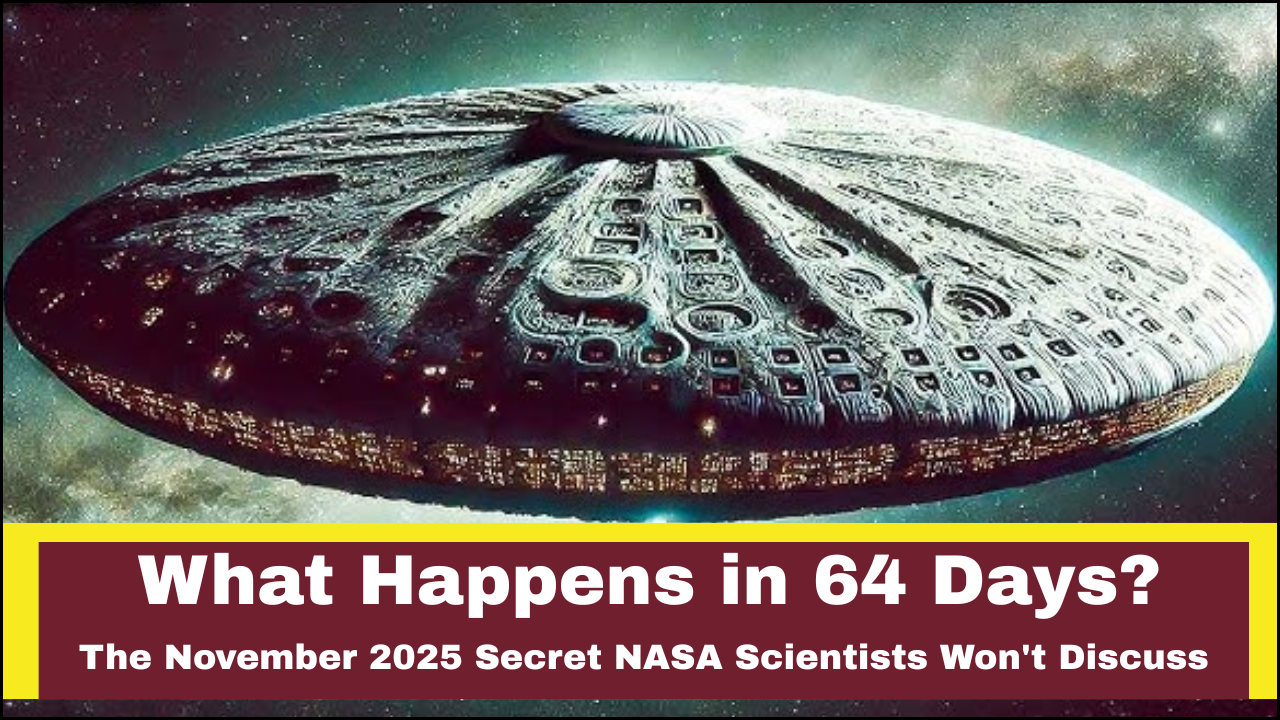The phrase “What happens in 64 days?” has been echoing across online forums and science communities ever since a cryptic NASA memo and unexplained sky observations surfaced in early September 2025. Many now point toward November 202 as the month something significant — and possibly unprecedented — is expected to occur in space. While NASA has not publicly confirmed any major celestial event, subtle hints from scientists, data blackouts from observatories, and classified project schedules have fueled a wave of speculation about what the agency may be preparing for.
Overview (Quick Table)
| Key Aspect | Details |
|---|---|
| Event Name | Unconfirmed NASA Observation Event (Code-named “64 Days”) |
| Speculated Date | November 2025 |
| Involved Agency | NASA and partner observatories worldwide |
| Possible Nature | Celestial encounter, solar activity, or interstellar object observation |
| Public Disclosure | Limited — NASA officials have not issued a full statement |
| Global Attention | High — trending among astronomers and space enthusiasts |
| Primary Source of Speculation | Data silences, unusual telescope schedules, and research embargoes |
What Sparked the “64 Days” Mystery?
The mystery began when a NASA scheduling document referred to an internal “Deep Field Priority Window” set for November 2025, exactly 64 days after the note was published. Soon after, several NASA-affiliated scientists suddenly became unavailable for interviews regarding upcoming space missions, adding to public curiosity.
Concurrently, a few amateur astronomers noticed an unusual deep-space tracking pattern from multiple observatories, as if monitoring an object or event beyond the typical range of known missions. This combination of secrecy, timing, and observable sky activity has led many to believe NASA is preparing for a major celestial phenomenon that could reshape scientific understanding.
Possible Explanations Under Review
Although no official confirmation exists, space analysts have proposed several scientifically plausible explanations for what might be unfolding.
- Approach of a New Interstellar Object:
Following the recent discovery of 3I/ATLAS, astronomers suspect another interstellar visitor could be approaching our solar system. NASA might be withholding data until its path and composition are confirmed. - Solar Flare or Magnetic Disturbance:
The Sun’s current activity cycle is nearing a solar maximum, meaning large flares or coronal mass ejections are possible. A classified alert could be tied to protecting satellites and infrastructure. - Deep-Space Observation of an Exoplanetary System:
Some believe the James Webb Space Telescope (JWST) and other observatories are coordinating to observe an exoplanet that may show biosignatures or unusual atmospheric readings. - Asteroid or Comet Anomaly:
A potentially hazardous or rare asteroid might be under observation. NASA often withholds details until precise orbital predictions are verified to avoid unnecessary panic.
Why NASA’s Silence is Raising Eyebrows
Historically, NASA is transparent about celestial events. However, several recent actions have drawn attention:
- Key data streams from specific space telescopes have been temporarily locked under “restricted access.”
- Public briefings originally scheduled for October were quietly postponed.
- Some project codename references in official documents have been redacted.
These changes may indicate a deliberate attempt to manage sensitive findings or a pending confirmation of a classified scientific breakthrough.
What Experts Are Saying
Independent astrophysicists suggest the agency’s secrecy might simply reflect standard protocol during data validation — ensuring no premature conclusions reach the public.
Dr. Elena Rojas, a planetary scientist unaffiliated with NASA, commented: “When something big is detected, NASA and ESA typically go silent until the data is confirmed. It’s not always about hiding — it’s about being absolutely certain.”
Meanwhile, space watchers and online researchers continue decoding telescope logs and flight plans, seeking clues about what might unfold by mid-November 2025.
Historical Parallels
This is not the first time NASA has withheld information before a major revelation. Similar patterns occurred before:
- The ‘Oumuamua announcement (2017) when early data hinted at an interstellar origin.
- The first black hole image (2019), when collaboration secrecy preceded a historic reveal.
- The JWST exoplanet discovery (2023), which was under embargo until confirmation.
If history repeats, the “64 Days” mystery might end not in danger — but in a groundbreaking discovery.
Public Reactions and Online Buzz
Social media platforms have exploded with theories ranging from scientific discoveries to extraterrestrial contact. While some speculate about secret missions or cosmic threats, others remain optimistic that NASA is preparing to unveil a new chapter in astronomical history.
The hashtag #64DaysToNovember has trended globally, with amateur astronomers planning coordinated sky-watch events around potential observation windows.
Why November 2025 Matters
Astronomically, November offers optimal viewing conditions for deep-space observations, including alignment opportunities with Jupiter, Saturn, and several outer-orbit zones. If an incoming object or cosmic event aligns within this window, NASA would have the best chance to capture high-resolution data using multiple telescopes simultaneously.
Possible Announcement Timeline
According to internal project patterns, NASA typically reveals major findings 2–4 weeks after data validation, suggesting that any revelation connected to “64 Days” might emerge by late November or early December 2025.
Final Takeaway
While speculation runs wild, the “64 Days” mystery highlights humanity’s deep curiosity about the unknown. Whether it’s a new interstellar discovery, a solar phenomenon, or a historic astronomical observation, one thing is certain — November 2025 could become a defining month in modern space science. Until NASA speaks, the world will keep watching the skies and counting down the days.
FAQs
Q1. What does “64 Days” refer to?
It refers to the countdown between a classified NASA document and an expected observation window in November 2025.
Q2. Is there danger to Earth?
No current evidence suggests any threat — scientists believe it’s an observational event, not a collision risk.
Q3. When will NASA make an announcement?
If history repeats, an official statement or publication may come in late November 2025.
Official Source: NASA’s Official Newsroom

